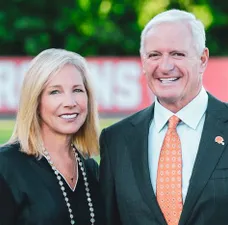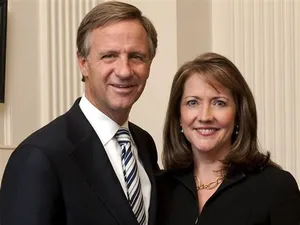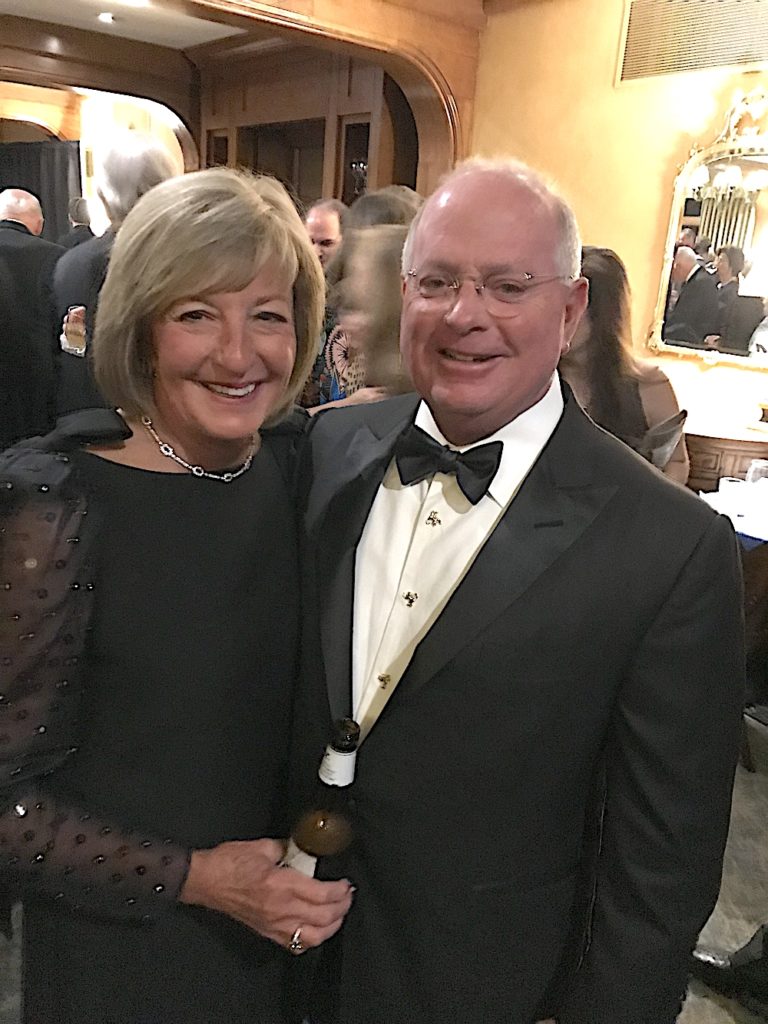As promised we will now move into the HOH rise to power within the expanding Pilot Oil empire in the vehicular retail fuel distribution industry. From the start of the business until Big Jim’s buy out of Marathon’s ownership, the company grew primarily through internally generated cash flow, smaller bank loans and funding from Marathon. Convenience with fuel stops was the path of the industry and Pilot was good at it. As the cash flows became stronger Pilot’s headquarters in Knoxville began to expand with more support staff. Experimenting with the travel center concept began. During this time Knoxville had been introduced to the general public internationally with the 1982 World’s Fair, so Pilot’s marketing opportunity to become a fixture in the minds of motorists throughout the country was magnified. In 1980, The Wall Street Journal gave Knoxville the “scruffy little city” name that stuck as the city bid for the fair. A section of the city and businesses within adopted it and became known as Scruffy City. The WSJ’s intent to disparage was adopted and turned by locals into a compliment and business opportunity.
During the period there had been complications within the Tennessee banking industry as the empires of Jake and CH Butcher crumbled in the early 80s with Jake’s obsession with his ill-fated run for governor (Democrat), funding of the World’s Fair and related businesses, while also growing their bank holdings through an investor Ponzi type scheme. Along the way they would siphon off excessive cash for themselves and personal ventures. The Haslam family had steered clear of the Butcher shenanigans, however, all banks were being impacted by the downturn in the industry after banking deregulation and the 1986 tax reform act. This led Pilot to rely on their partner and supplier, Marathon, along with a handful of financial institutions to fund the growth in locations.
Pilot, which had strongly increased its retail locations regionally, began expanding into the rest of the country through acquisitions as well as internal development of travel centers. They had somewhat perfected operations, customer products, facilities design, marketing, and so forth. There were many independents in the travel sector and the southeastern U. S region. There were also chains with lower facilities costs that mixed retail and trucking needs equally in Speedway and RaceTrac as well as higher end, trucker dominated chains known as TravelCenters of America (TA) and Petro (now owned by TA). Each had its own operations model and target market. However, the industry was splintered nationwide and no industry consolidation efforts were underway. It was still the wild, wild west in the sector. Pilot saw its opportunity.
Jimmy and Bill Haslam had begun to make their marks on the company at this point with Jimmy being more operations and marketing oriented and Bill with more finance and executive management duties. The buy out of Marathon had increased their ownership interests at the same time that regional banks had begun increasing risk taking with finance as well as making acquisitions of other banks. Pilot had grown to a size that made it an attractive target for corporate banking. Big Jim’s politicking and associations with other business leaders and bankers around the country began to pay off for the business.
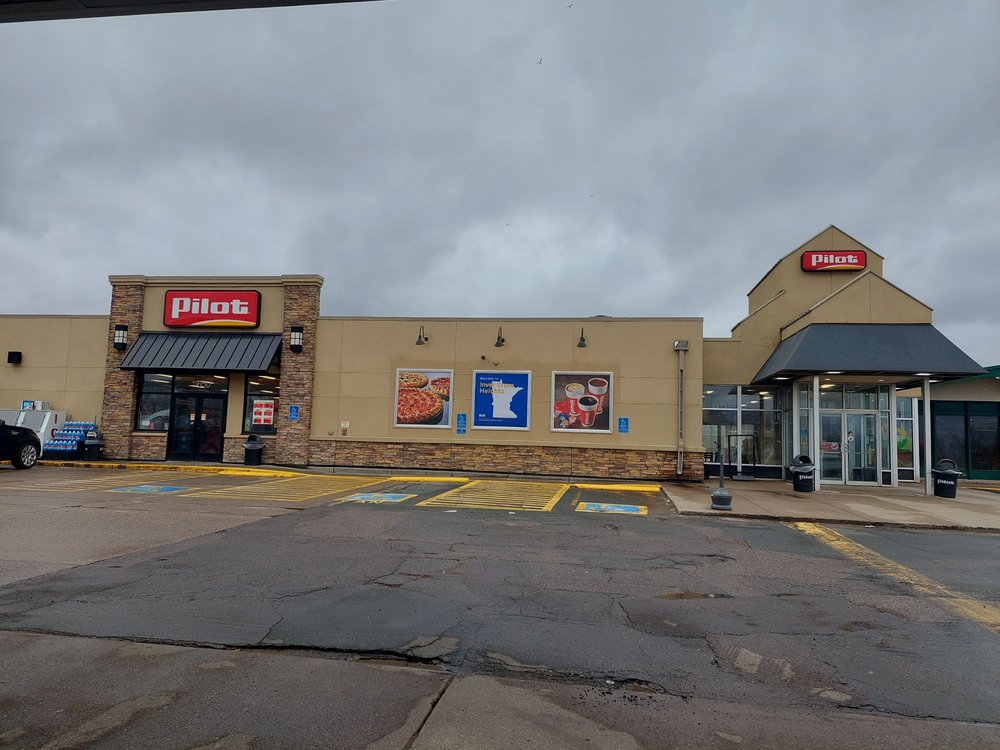
Enter Goober Gump
As previously discussed, my life had changed significantly in the mid-80’s with a divorce, move to east TN and remarriage. My employment began in east TN with a large, regional, Memphis based bank that had made acquisitions of bankrupted Butcher banks around the state. They needed a commercial loan officer to develop the Knoxville business market, the third largest market in the state, from a bank they had acquired in a nearby county. Their intent was to acquire a bank or simply branch into Knoxville after building a book of business. I expressed my interest, interviewed and received the job offer. A month later I moved to the area and began.
Commercial loan officers are employed to make and service commercial (business) financing. So the job meant I needed to get out of the office and go meet potential customers and referral sources to learn more about their businesses and build relationships. Once an opportunity to do business occurred, my job was to determine if the business customer had the profile, financial condition, ability, etc. to use the financing to accomplish their business goals and repay the loan(s) to the bank on a timely basis as agreed.
It is one of those unusual jobs where you ask a prospective customer for their business, the prospective customer agrees to give it to you or give you a shot to see what you can do, and then sometimes you have to back out of taking their business and decline it because the prospective customer may not be able to repay the loan or your employer may not want the prospect’s business type in its loan portfolio. Weird, huh? Happens everyday, multiple times per day, all across the business world in America and other capitalistic countries.
Over the next seven years I built a customer and referral base in the market with a couple of banking employers. I obtained 90+% of my customer base through customer involved professionals or by satisfied existing customers. I called on every CPA and attorney who would give me time to gain their trust as they are an integral part of every successful business owner’s team. For two of those years I left bank employment to partner in a small commercial real estate financing firm that worked with commercial developers and financing sources. We later merged into a much larger regional banking and mortgage operation based in Virginia who wanted a presence in our market. With the merger I returned to a better version of business banking that included commercial real estate financing. In addition to being a business lender I became the regional underwriter of all commercial real estate loans. Later, I was also given the role of the regional commercial construction underwriter. To say I wore many hats in that banking organization would be an understatement. Senior management asked me to attend an executive seminar series in my areas of expertise at the University of Virginia in Charlottesville at their famous Darden Graduate School of Business. I was humbled as this was an honor since the school was then and is still rated now in the Top Ten in the world. While there I listened to lectures and broke bread in the evenings with other business bankers and a couple of their highly accomplished graduate school professors. Turned out the professors moonlighted as consultants and trainers of corporate and small business bankers for my employer and were scheduled to do so in our state’s main offices in six months. I was aware of a training I had to attend during the time period, so it was easy to put two and two together. We scheduled time together at that future event. This was in the fall of 1991.
My employer finished that year going through yet another bank merger, this time to form a top twenty in assets sized bank that was located in a half dozen states primarily in the southeastern U. S. Our systems and loan policy remained as they were and it all appeared to be business as usual, a true merger of equals. So in the spring of 1992 I headed to the training event and met with the professors. We hit it off well again and came up with a plan where they would do a training program designed for prospective business customers in our area over a three day event. I made arrangements for facilities and invited business owners and leaders in our area. I would act as the presenter on behalf of my employer, who would sponsor the shindig.
Upon my return to the office the next week after the training session, I looked up from my desk to see four men in suits walk into our offices. Big Jim, Jimmy, Bill and their CFO had made arrangements to see us through my supervisor while I was gone. It turned out they were long term friends and had done business previously with our bank’s state President. The President had sent them to us to work on a financing project since they were local to our market. My supervisor typically handled the large corporate accounts and had been assigned as primary contact. My role typically was more small business accounts under $20 million in sales. However, it appeared the professors had informed the President that I needed to run point on underwriting Pilot’s financing proposal, especially since it involved commercial real estate and construction. My supervisor was known to be a good back slapper, but not much with the numbers and the President wanted it done right since the loan facility was his to present to the Board of Directors in our state. No pressure on ole Goober Gump, right?
The Deal
Over the next couple of weeks we met with one or more of the Haslam’s a few times along with their CFO many times. The deal itself was to take their version of the travel center prototype they had been developing and fine tuning, and formally introduce it throughout the country. Pilot had developed a prototype that was mid-cost in the sector. It had much more to offer than the independents and low end companies, but was lesser cost and expansive as well as more retail customer oriented than the high end TA’s and Petro’s, which were dominated by trucking customers.
In 1992 dollars it meant their average project cost was $3-4 million depending on land and local building costs whereas the low end competition was at $1.5 to $2 million with less products and services. The higher end competition was at $5-7 million per location. The mutually agreed financing plan even provided for them to be able to expand the facilities with loan funds of some of their proposed locations at their sole discretion later if business was good. They had tested the concept with actual locations and felt comfortable they would succeed. After non-disclosures were executed, the details and projections were provided. I was assigned to work directly with the Pilot CFO, who I liked a great deal. Just a regular guy doing his job well.
I would be remiss if I did not give my observations and impressions of Big Jim, Jimmy and Bill. They were pretty much as you might imagine. Big Jim was confident and cordial to all of us including the admin assistants. It was clear he was large and in charge. Jimmy ignored all of us except my supervisor. He was all business and it was clear in his mind he did not want to mingle with the lesser players. Bill made it a point to get to know everybody, ask what our roles were and shake hands. He was very polite and people oriented.
Upon completion of the underwriting and presentation of the financing for approval by the President, we were given the perfunctory ‘atta boys and girls’. We had the satisfaction of helping a locally based national business take the next step. The financing itself was a $45 million participation loan with a half dozen other regional banks taking anywhere from $2-10 million dollars for their portfolios. It was a considerable sum in those days. The loan facility provided for Pilot to construct and start up operations on as many as ten travel centers around the country initially. It was designed differently than most packages and outside of normal loan policy. From the beginning, loan proceeds would be used to start construction of facilities after Pilot acquired the land with their own funds. Upon the first use of loan funds there would be interest only payments on the loan balance outstanding for each location for up to three years. The locational loan balance that remained at the end of that three year period would be amortized over 10 years. As loan balances were paid down, loan funds would be freed up to finance additional locations in the same manner. If it worked as well as projected, the financing package could be renewed periodically and continue for as long as Pilot desired to expand.
In practice, Pilot accelerated the pay downs of loan balances faster than projected as many of the locations were major successes. Only a handful were amortized. This accelerated their expansion. It was not long before other larger banks began offering the company similar, larger loan facilities, which allowed them to take the expansion nationwide even faster. They struck deals for acquisitions of other smaller competitors that banks clamored to finance. Domination of an industry had begun.
Their timing for the expansion could not have been better. Slick Clinton had gone in as POTUS and the GOP had taken over Congress with Newt’s Contract with America. Business was rolling and jobs were plentiful. America was on the move.
As a side note before we move on, fuel providers for vehicles make very little money selling gas and diesel. Typically they make their money on the stuff and junk they sell (my personal technical banking terms – lol). Stuff is food items and junk is non-perishables of every type if you have ever visited a travel center. They also make money on leasing fast food space to franchisees as well as providing specific services to corporate trucking customers. Pilot did not start fuel wars, but they could move their prices down with them to keep customer traffic up and outlast the independents because of the profit margins in all of the stuff, junk, leases and services.
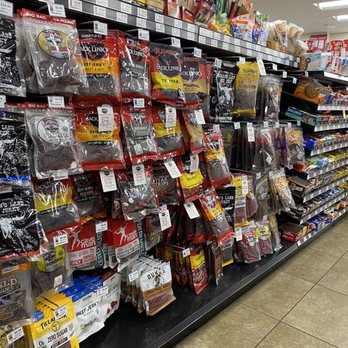
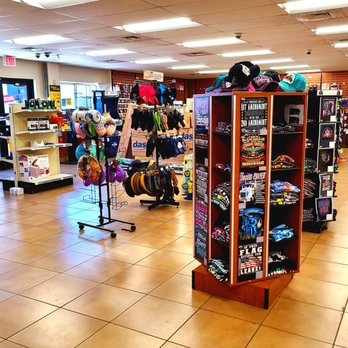
The Larry and Bob Show
Normally the story would end there for Goober Gump’s 15 minutes of fame. However, it did not as while all of that was underway, the event I had planned with my UVA professor buddies was being set in motion. The name I came up with for promotion was The Larry and Bob Show. Obviously, those were their first names. In their side venture as trainers of commercial bankers, they had developed quite a routine that utilized great humor. For old timers, picture Mutt and Jeff as high end business professors doing their schtick. The only visual difference was the tall one was also heavy and the short one had an average build. Their presentation was spectacular in terms of business value and entertainment. They held the attention of every attendee for three days and all of us gained a great deal of practical knowledge, applicational tools and business wisdom that we could apply.
Included in the group of 40 invitees was the CFO of Pilot along with a host of other business owners and key managers of businesses from the area. The CFO had already cut a deal with the Haslam’s to leave after the financing and project began to go to a nearby state and build two independent travel centers that he planned to own and operate while granting Pilot a first right of refusal to buy them if he ever sold. Which is what happened and he never had to work again, but I lost track of him. Another of those attending you may have heard of by the name of his new business venture at that time, Regal Cinemas. Yes, Michael Campbell, the founder of Regal along with his partner/CFO at that time were participants in our event with the professors. He would later grow Regal Entertainment Group into the largest and most influential cinema chain in the world. It is now the second largest. And yes, his company was based in Knoxville. Regal sold a majority interest in it to Cineworld out of Great Britain in 2017. After the event he made it a point of thanking me, Larry and Bob, and the bank for all they had learned from the event. Our corporate bankers were soon granted access to work on Regal’s future financial needs due to the relationship we built. Similar results occurred with nearly all of the attendees.
Life Change
I had given my eye opener to senior management. My thoughts were, “Hey guys, none of you have ever done something like this that worked this well and brought in so much business, throw me a bone.” I had spent $20 K of my region’s marketing budget to produce untold millions in profit long term for the bank. My expectations were to be given a more clear path to position upside in our growing organization instead of them throwing even more responsibility at me in more market segments without more compensation. The actual senior management response was disappointing. I received a 5% of salary bonus at year end with a bank wide announcement that, once again, we were merging with a larger bank in early 1993. We would soon be working for Hugh McColl and NCNB with a name change to NationsBank. Our policies would be changed to their policies and reorganization was in the works. So, in reality, we sold out to a brutal dictator type CEO and his cronies. Great. It was the same NationsBank that later acquired Bank of America on the west coast and changed their name to it.
In not quite 4 years I had worked through three mergers, four assigned customer market changes, taken on two additional market segments to underwrite all regional requests, and had four immediate supervisor changes – while still exceeding every personal job performance goal they set before me. In return I received mediocre salary trap compensation, no clear upside mobility, and a heck of a lot of frustration. It seemed the referral and customer base held more respect for my work than my own employer who benefitted greatly from it. Even other bank employers had inquired about making a move to them, which I had declined.
As we entered the fall of 1993, I had enough of commercial banking even though I loved my small business banking role. I resigned and went to work in senior management for a local, long term established equipment dealership. I learned a hard lesson in a very short period of time that one should refrain from doing things in frustration or based solely on increased compensation. Eight months later I was unemployed as I had learned they were committing bank, insurance, and tax fraud while violating every applicable environmental law on the books. I did not think I would look good in a prison uni, so it was better to vacate than try to fix the unfixable. For what it is worth, a few years later they tanked and creditors sold off their remaining assets.
During this period I hit 40 years old. I was unemployed and burned out from playing the game. I helped others realize their dreams including the Haslam’s and many others while struggling to provide reasonably for my own family when considering the time and commitment that was required. I still had bills to pay, a family to provide for, and a lot of years left to live if it fit the Lord’s plan. So, I hit my knees and gave all of me to Him, not just the parts I wanted to give. I revisited The Cross, the place He died for my sins and the sins of the world. I gave him all of my goods and the bads and handed him the keys. I was done trying to get ahead and giving more than I should have to the world. Whatever happened, from that point, happened. He would determine, not me. I literally prayed all night and followed up with renewed dedication daily.
The next morning I called a friend who ran a small business banking operation for the holding company of a small group of local rural banks. He had asked me for years to work with him. It was time if he would have me. I needed less job pressure and to do what I enjoyed doing instead of playing somebody else’s game. I was at peace in my heart, even though I knew the salary would be much smaller albeit with a good commission percentage for getting deals done. The customers would be small businesses and we would use SBA guaranteed financing programs a lot of the time. My trusted referral sources could use my services for clients. My friend and now, new boss, told me the offer would be in the mail that day, to consider it done. I asked if I had time to take my family on vacation for a week that we had scheduled previously and he agreed.
Effectively, I had taken a major step back in the world’s view, however, I decided it was time to bet on me and doing it the Lord’s way from that point on.
The vacation went wonderfully. I sat at the ocean’s edge with my wife and daughter for the most part of 6 days as my internal peacefulness grew. My wonderful wife continued to do her part upon our return and stand in the gap for us throughout the process. She found part time work in a mortgage company to supplement our income in the interim after having left her full time banking position the year before to take care of our young daughter who had just started school with a hearing disorder. She wanted her husband back, the guy she married and not the guy I had become while striving so hard to get ahead.
It was a bet we would win together with the Lord’s clear direction and blessing.
Don’t think I have strayed too far from the series as this will lead to the next part of the HOH story. We are not done with them yet by a long shot. Stay tuned.
For you, Sunshine…


